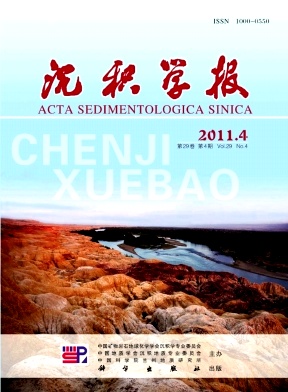Species and Distribution of Heavy Metals in Different Size Fractions of Sediments from the Baotou Section of the Yellow River
- Received Date: 1900-01-01
- Rev Recd Date: 1900-01-01
- Publish Date: 2011-08-10
-
Key words:
- Baotou section of Yellow River /
- size fraction of sediment /
- speciation of heavy metal /
- grainsize effect
Abstract: The Yellow River contains large amounts of sands, resulting in a peculiar hydraulic condition which is characterized by a magnificent interface between the particulates and water. In addition, Baotou section of the Yellow River suffers from severe heavy metal pollution receiving the industrial discharges from the Baotou city. Therefore, this study was carried out on Baotou section of the Yellow River based on its representativeness on the mechanism of heavy metal adsorption on watersediment interface, and on the heavy metal spatial distribution, mobilization, transformation, and accumulation effects in sediments. Because of their persistence in the environment, heavy metals often pose threats to aquatic lives and plants in the environment. Based on the theories and methods of environmental geochemistry, biogeochemistry, pollution ecology and modern sedimentology, the speciation distribution characters of heavy metals such as Cu, Pb, Zn in the different grain sizes sediments and the contribution of the different grain sizes sediments on the concentrations of different heavy metals speciation were discussed in this work. The results indicated that the bound to FeMn oxide was the dominant form of nonsteadystate of Cu, Pb, and Zn in different grain sizes sediments from the Yellow River, and there were the concentration order of the bound to FeMn oxide > the bound to carbonate > the bound to organic matter for Cu and Pb, while the bound to FeMn oxide > the bound to organic matter > the bound to carbonate for Zn. The grainsize effects of the different species for the selected heavy metals were observed in this work which was the results of particle size and active components such as organic matter, carbonate and FeMn oxides in different grain sizes sediments from the studied section of the Yellow River. In all of the factors, the particle sizes played a key role in affecting the concentration of different species of the selected heavy metals. Based on the experiments, it was found that the bound to FeMn oxides was the dominant form in different size fractions of sediments from Baotou Section of the Yellow River, and its concentration was mainly influenced by the content of Fe oxide in different grain sizes sediments from the studied section of the Yellow River. The results also showed that the concentrations of each species were ranked as Zn>Pb>Cu in the same size fraction sediments, which was not consistent with the background values of heavy metals in sediment from the midstream of the Yellow River. The differences found in this work indicated that there were exogenous heavy metals inputs from the industrial wastewater of the Baotou City from another point of view. The dominant forms of Cu, Pb and Zn are FeMn oxides bound and bound to organic matter in sediments from the tributaries of the Yellow River. From the comparison between the main stream and the tributaries of the Baotou Section of the Yellow River, it could be found that the concentration of each species for the selected heavy metals in the tributaries were obviously high than those in the main stream which was also indicated the exogenous heavy metals inputs from the industrial wastewater of the Baotou City. By the comparison of the two tributaries, the pollution superposition of Pb and Zn from the Kundulun River were higher than those from the Sidaosha River, while the pollution superposition of Cu from the Sidaosha River was higher than those from the Kundulun River. The correlation analysis indicated that there were negative correlation between the mean grain sizes and the concentrations of organic matter, carbonate, Fe oxide and Mn oxide in the sediments with different grain sizes from the main stream of the Yellow River. The results showed that there were significant negative correlation found between the organic matter and the mean grain sizes with the correlation coefficient of -0.975 (p<0.005); and there were significant negative correlation found between the carbonate and the mean grain sizes with the correlation coefficient of -0.944 (p<0.05). The contribution of mass fraction for different size sediments to speciation distribution was different. The ordre of contribution rate for different grain sizes sediments was D5 > D4, D2 > D3 > D1 at Site A; D4> D3, D2 > D5 > D1 at Site B; D3 D5 > D4, D2 >D1 at Site C; D5D4>D3>D2>D1 at Site D. Overall, the contribution on heavy metal speciation in sediments from Baotou Section of the Yellow River was mainly caused by the size fractions of D5 and D3. Thus, the potential ecological risk caused by the different grain size sediments can not be ignored, especially the size fractions of D5 and D3.
| Citation: | TIAN Huijuan. Species and Distribution of Heavy Metals in Different Size Fractions of Sediments from the Baotou Section of the Yellow River[J]. Acta Sedimentologica Sinica, 2011, 29(4): 776-782. |






 DownLoad:
DownLoad: